A buyer’s guide to pond plants
Increased daylight hours and spring warmth mean that now is the time to think about plants for your pond. Pond plants can provide a refuge for wildlife, provide spawning sites for fish and amphibians, purify water and even help prevent algae.
Pond plants can be divided into five main groups - moisture-loving, marginal, deepwater, oxygenating and floating. All can be grown in the same pond but all have different planting requirements.
Moisture-loving plants
Moisture-loving plants are any garden plants that prefer wet soils including Gunnera, Hostas, ferns, and Primula. The ideal is a bog garden which is part of the main pond and lined but filled with aquatic compost. To create this dig out the main pond as normal but have a lip covered with a large overlap of pond liner at one end.
Fill the pond up and water will naturally spill over to the boggy section, providing a perfect wet, soil habitat for moisture-loving plants. Very shallow wet areas are also great for wildlife.
If you can’t provide a dedicated bog garden but still want moisture-loving species in the pond, just raise the pots up so the bottom 1-2” of the pot is in water and the rest above. As long as the plant roots are always in contact with water at the base of the pot the plant won’t dry out and it will still have a positive role to play in soaking up those excess nutrients from the water.
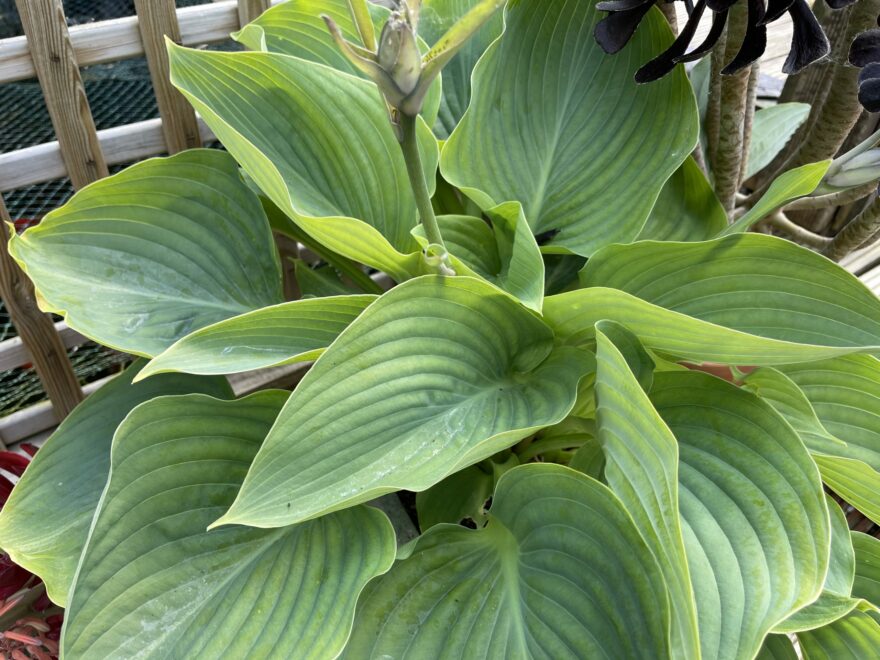
Marginal plants
Popular marginal plants include Yellow flag iris, Marsh marigold, and Bullrushes (Reedmace.) Marginal plants are typically potted up into pond planting baskets and placed on the edge of the pond on a marginal shelf, about 9-12” deep, or a spade’s depth when the pond was dug. Marginals are also suitable for bog gardens as long as the aquatic compost is wet year-round.
Most marginal plants are easy to grow and put on huge growth in spring and summer before dying back in autumn and winter. Flag Iris and Reedmace although popular grow too large for most ponds and can be blown over in strong winds if not tied back. The good news is that the marginal category is the largest pond plant category with hundreds of species to choose from, from easy to delicate, feet high to just inches high, with a flower or without, red, green or British native.
Replant all marginal plants into aquatic planting baskets filled with aquatic compost, to feed the plant and give the roots space to grow.
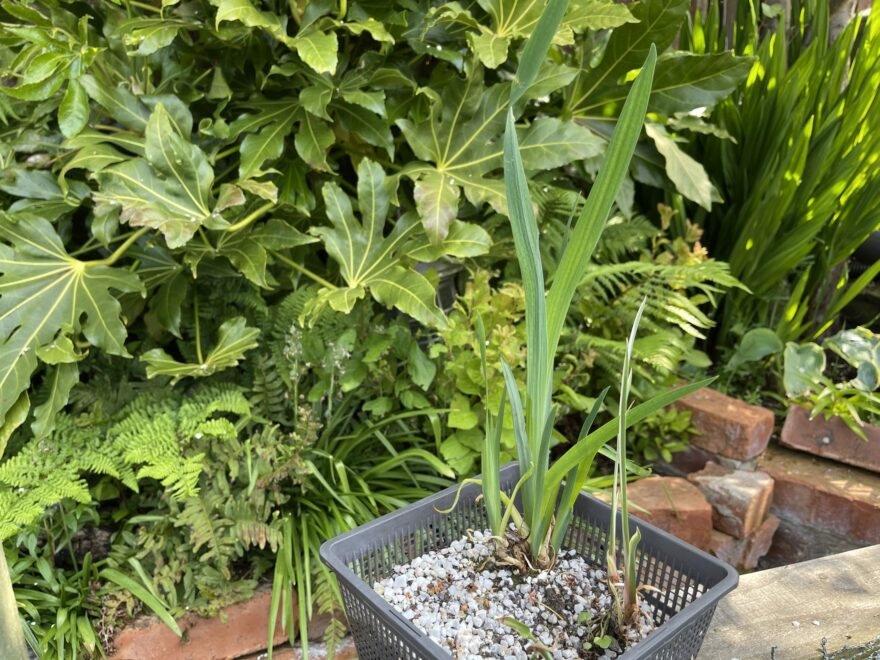
Deepwater plants
The most famous deepwater plants are of course the Waterlilies, Nymphaea spp. But not many people know that there are literally hundreds of varieties and cultivars varying in size and flower colour. True pygmy water lilies can be planted year-round in a half barrel but some varieties can spread across ten feet or more in diameter. Planting depth can vary greatly too, from just 12” for the pygmies to over three feet deep for the largest lilies.
Flower colour can vary from white, yellow, red and pink. There’s even one they call black, so when choosing a lily variety first decide the colour of bloom that you want, then find a variety to suit the size of your pond.
Water lilies are famous for being heavy feeders so plant in very large planting baskets, use good quality aquatic compost as well as offering additional plant food throughout the growing season.
The most popular water lily in the UK, Nymphaea alba, is also one of the least suited to most ponds because it grows to a large size and can create a massive rootball two feet across over time. A classic sign that it has been planted too shallow is also when the leaves stick up vertically out of the water. When growing like this the undersides of water lilies are also vulnerable to aphid attack.
A large pond designed just for displaying water lilies can be a thing of beauty, and several varieties can be planted in groups for maximum effect. Then blooms of all colours and types can be used to flower at different times and with different petal shape and colour. Few things beat water lilies in flower on a sunny day.
But if water lilies aren’t your thing, the humble Water hawthorn, Aponogeton distachyos is a cheaper, smaller alternative and will flower twice a year if you’re lucky. Definitely one worth looking into. Cover the top of the pot with coarse gravel for any deepwater plant where fish are present, to prevent them from digging up the plant.
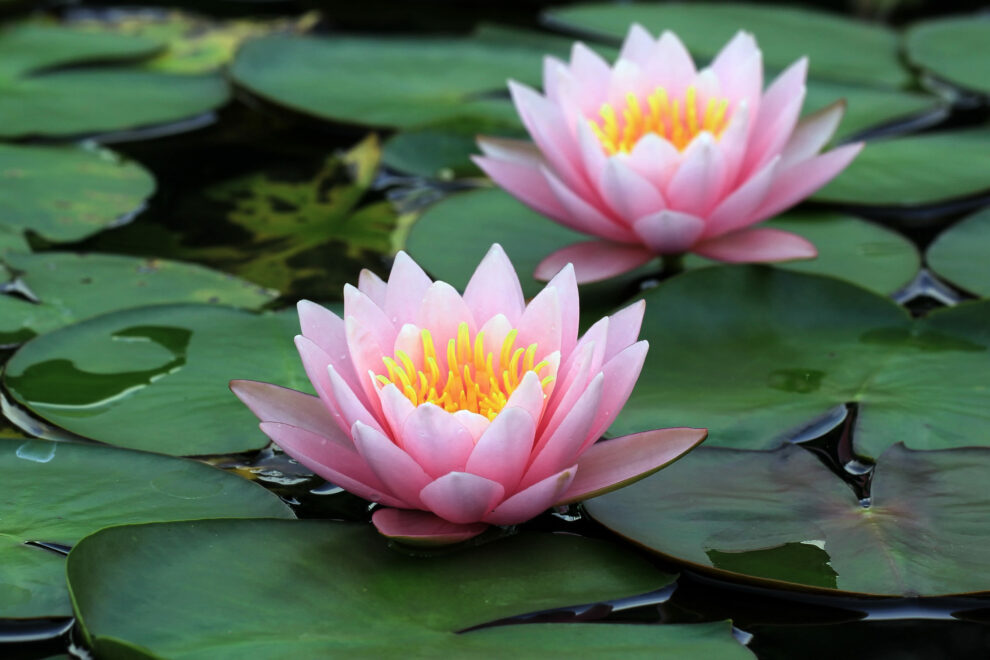
Oxygenating plants
The term oxygenating plant is a confusing one, as all plants produce oxygen when they photosynthesize during daylight hours. However, one plant, Elodea densa, gets the name “oxygenator” because you can actually see it producing small streams of fine oxygen bubbles in strong sunlight. The purpose of adding oxygenating plants is to grow rapidly, consume excess nutrients that would otherwise fuel algae, and provide cover for fish and wildlife.
Another excellent oxygenator is Hornwort, Ceratophyllum demersum, and both can be used in combination. Many other species are sold as oxygenators although few are true aquatics like the above species, and are much harder to maintain submerged year-round.
Most oxygenators are sold bunched, with cut strands tied together and weighted. You don’t have to pot-up oxygenators like you would with deepwater, marginal and moisture-loving plants and if you do the stems usually rot and the plant floats off anyway.
Instead just toss bunched plants into the pond where it will float, or sink and then grow up to the surface. The aim is to have a healthy patch of oxygenating plants which covers up to 30% of the pond surface. When it gets to 60% remove half and compost it, as oxygenating plants actually do the opposite at night and remove oxygen, risking the lives of the fish.
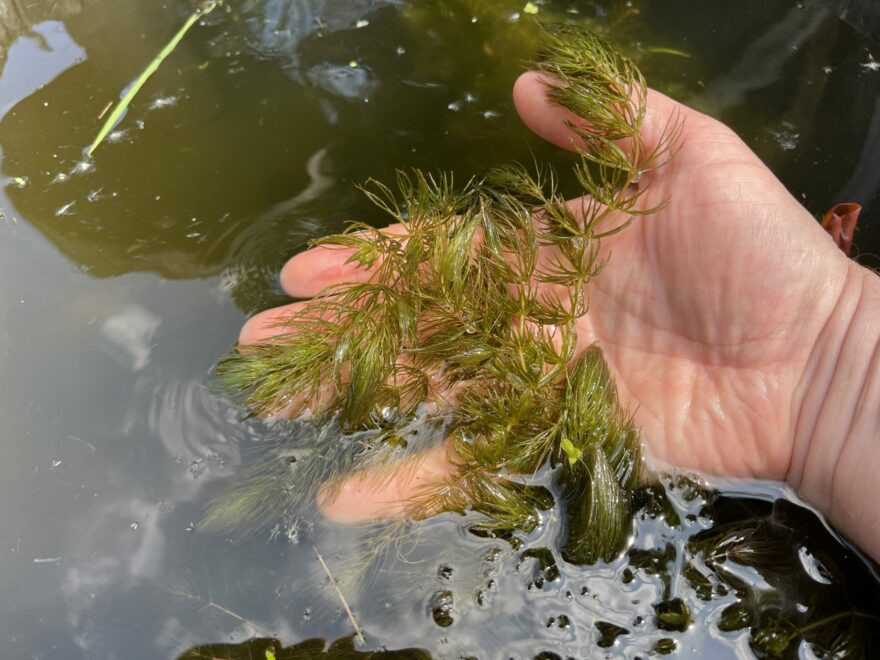
Floating plants
True floating plants never root into the soil, instead floating and taking all their nutrients directly from the water. The purpose of floating plants is decorative, to provide shade (helping to fight algae,) and cover for fish from predators. They will also soak up excess nutrients in the pond water, again, helping fight algae.
British native floating plants like Frogbit, Hydrocharis morsus-ranae will survive year round but tropical species like Water lettuce and the now-banned Water hyacinth would only survive in a UK pond in the hottest summer, and would die as soon as it got cold.
The best possible planted pond will combine moisture-loving, marginal, deepwater, oxygenating and floating plants. A planted pond will have the highest diversity of insect life (also good for fish to feed on,) and if you feel strongly that you want British native species only, you can do that too. British native pond plants will aid conservation and attract the largest range of native insects and other wildlife.
The unfiltered, planted pond
Planted pond utopia is possible but is best with very few, small fish or no fish at all. A few goldfish or Sticklebacks in a large, planted pond would rarely if ever require feeding, although the goldfish would probably breed and soon start to increase in number. Fish are the main reason that filters are advised for ponds as fish have oxygen requirements and their waste needs to be broken down.
So an unfiltered pond or a pond filtered solely by plants is possible, but if you intend to keep a variety of pond fish, a planted pond plus pump, filter and UVC is the best option, and the most popular.
Shopping list
- Planting baskets
- Hessian
- Aquatic compost
- Pond plant fertiliser
- Coarse gravel
- Pond plants




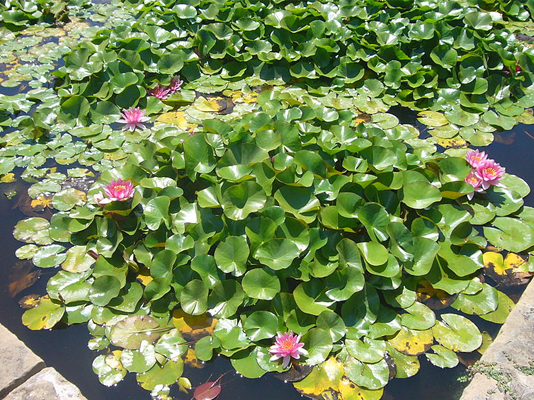
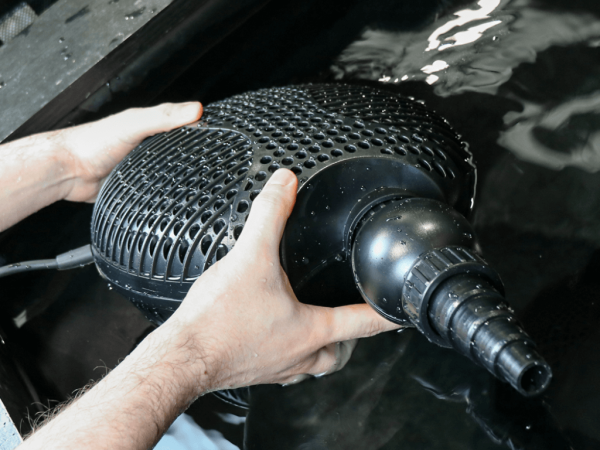
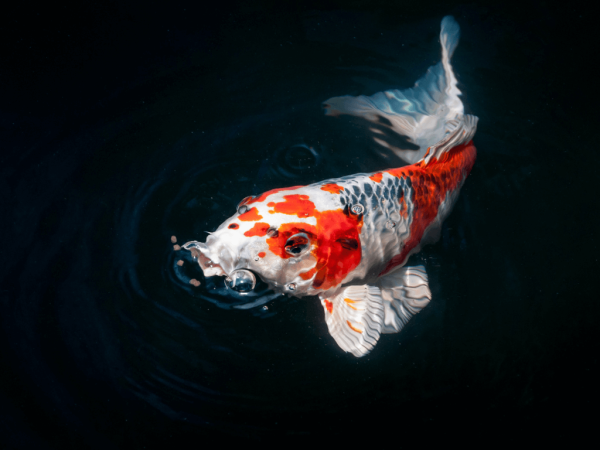
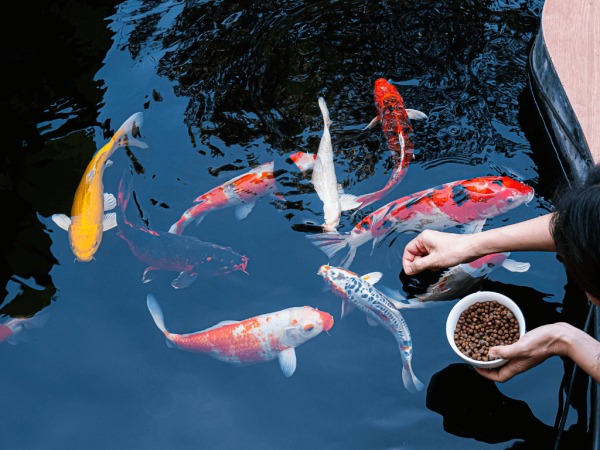
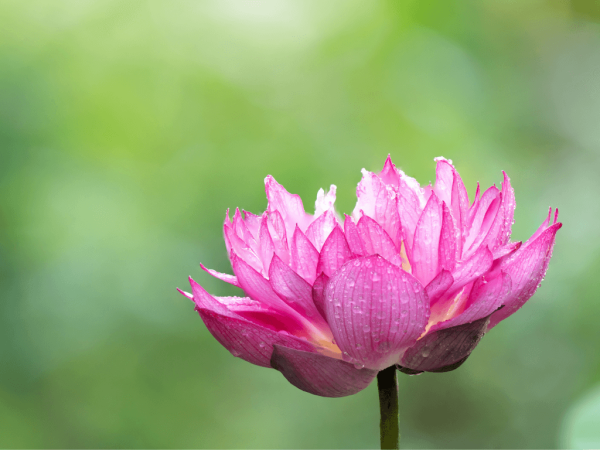
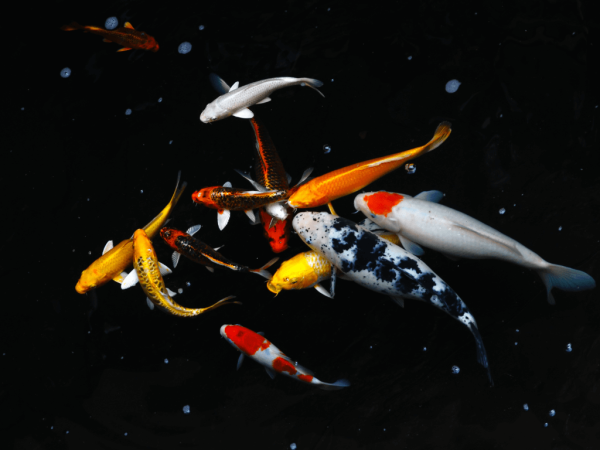
Could you please tell me the name of the water lily plant shown on your front cover page